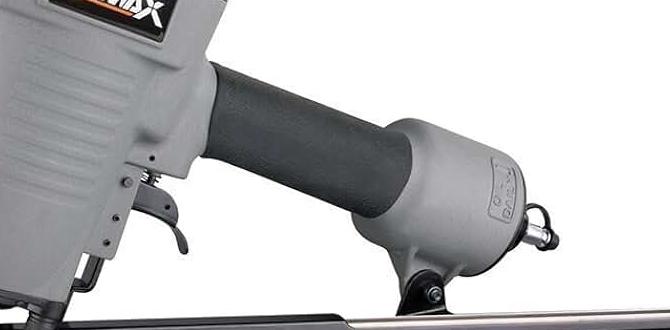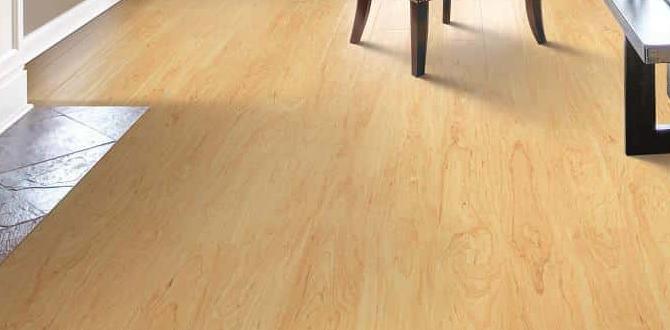Build a sturdy, stylish DIY wooden garden bench with a backrest in just a weekend! This guide breaks down the project into simple, achievable steps for beginners, ensuring you have a comfortable, custom piece for your outdoor space.
Want to add a charming, functional touch to your garden? A beautiful wooden bench can do just that. Imagine relaxing with a book or enjoying a cup of coffee on your own handcrafted seating. Building one yourself might sound a bit daunting, especially if you’re new to woodworking. But don’t worry, it’s totally achievable! This guide is designed to make it easy, showing you exactly what you need and how to put it all together, step-by-step. Get ready to create a backyard treasure!
Table of Contents
Frequently Asked Questions (FAQ)
- What kind of wood is best for an outdoor bench?
- For outdoor furniture, it’s best to choose wood that’s naturally resistant to rot and insects. Cedar, Redwood, Teak, and pressure-treated Pine are excellent choices. They hold up well against the weather. For a more budget-friendly option that still offers good durability, pressure-treated Pine is a solid pick.
- Do I need a lot of special tools for this project?
- You don’t need a whole workshop! A good circular saw or miter saw, a drill/driver, a tape measure, a pencil, safety glasses, and some sandpaper will get you started. If you have a Kreg Jig (for pocket holes), it makes joinery much simpler and stronger, but it’s not strictly essential for a sturdy bench.
- How long will a DIY wooden garden bench last?
- With the right wood, proper construction, and regular maintenance (like sealing or painting), a well-built wooden garden bench can last anywhere from 10 to 20 years, sometimes even longer. The key is choosing durable materials and protecting them from the elements.
- Can I customize the size of the bench?
- Absolutely! This guide provides dimensions for a standard-sized bench, but you can easily adjust them to fit your space or needs. Just make sure to recalculate your lumber quantities and keep the proportions balanced for stability and comfort.
- What’s the most important safety tip when building?
- Always wear safety glasses to protect your eyes from sawdust and flying debris. Make sure your work area is clean and well-lit. If using power tools, read their manuals, understand how they work, and keep your fingers away from blades and moving parts. A tool like a nailer requires extra caution; always follow manufacturer safety guidelines.
- How do I make sure the bench is stable?
- Stability comes from strong joints and a good foundation. Using screws that are the right length for the wood thickness, employing techniques like pocket holes, and ensuring all pieces are cut accurately and assembled squarely are crucial. Avoid relying solely on glue for structural integrity; screws or nails provide the necessary holding power.
DIY Wooden Garden Bench With Backrest: Essential Guide
Building your own wooden garden bench with a backrest is a rewarding project that adds a personal touch to any outdoor space. This guide is designed for beginners, breaking down every step with easy-to-understand instructions. You’ll learn what materials to choose, the tools you’ll need, and how to assemble a sturdy and comfortable bench from scratch. Get ready to create a beautiful, functional piece of furniture you’ll enjoy for years to come.
Why Build Your Own Garden Bench?
There’s something incredibly satisfying about creating something with your own hands. A DIY wooden garden bench offers a unique opportunity to:
- Save Money: Often, building your own bench is more cost-effective than buying a comparable pre-made one.
- Customize Your Style: You can choose the exact wood, stain, and dimensions to perfectly match your garden’s aesthetic.
- Learn New Skills: It’s a fantastic way to get started with basic woodworking and tool usage.
- Enjoy a Sense of Accomplishment: The pride of telling guests, “I made this myself!” is priceless.
- Create a Cozy Outdoor Retreat: A well-placed bench provides a perfect spot for relaxation and enjoying nature.
Choosing the Right Wood for Your Bench
Selecting the right lumber is crucial for a garden bench that will withstand the elements. You want wood that is naturally durable and resistant to rot and insect damage. Here are some excellent options:
Durable & Weather-Resistant Woods
- Cedar: Lightweight, naturally resistant to decay and insects, and has a beautiful natural color. It’s a top choice for outdoor projects.
- Redwood: Similar to cedar, it’s naturally resistant to rot and bugs. It has a rich, reddish-brown hue.
- Teak: Known for its exceptional durability and natural oils that make it highly resistant to water and rot. It’s on the pricier side but offers longevity.
- Cypress: Another naturally rot-resistant wood, often found in Southern regions, known for its stability and beauty.
More Budget-Friendly Options
- Pressure-Treated Pine: This is a very popular and affordable choice. The wood is treated with chemicals to resist rot and insects. Ensure you use exterior-grade screws and fasteners when working with it. When buying, look for stamps like “ACQ Approved” for safer modern treatments. You can find more information on safe wood handling at EPA Guidelines on Wood Preservatives.
- Exterior-Grade Plywood: For certain components where structural strength isn’t paramount, exterior-grade plywood can be a cost-effective option, especially if it’s well-sealed.
Wood Dimensions: For this project, you’ll primarily be working with standard lumber sizes like 2x4s, 2x6s, and 1x4s. The exact lengths will depend on your chosen design and dimensions.
Essential Tools and Materials
Gathering your tools and materials before you start is key to a smooth building process. Here’s what you’ll need:
Tools You’ll Need
Don’t worry if you don’t have every single tool listed; many can be borrowed or are optional for a basic build. However, some are essential for safety and structural integrity.
- Measuring Tape: For accurate cuts.
- Pencil: For marking your cuts.
- Safety Glasses: Non-negotiable for eye protection.
- Hearing Protection: If using power saws.
- Circular Saw or Miter Saw: For making straight, accurate cuts. A miter saw will make angled cuts easier.
- Drill/Driver: For drilling pilot holes and driving screws.
- Drill Bits: Various sizes for pilot holes and countersinking.
- Screwdriver Bits: To match your screws.
- Clamps: To hold pieces together while you fasten them.
- Sandpaper (medium and fine grit): For smoothing rough edges.
- Square (Combination or Speed Square): To ensure your cuts and assemblies are at right angles.
- Optional: Kreg Jig (or similar pocket hole jig): This makes strong, hidden joints very easy. It’s highly recommended for a cleaner look and added durability.
- Optional: Palm Router: For rounding over edges to make them smoother and safer.
Materials List (Example for a 4-foot Bench)
These are example quantities. Adjust based on your chosen dimensions and any design modifications.
| Item | Description | Quantity |
|---|---|---|
| Lumber | 2x4x8′ (for legs and frame) | 4-5 boards |
| Lumber | 2x6x8′ (for seat and backrest slats) | 3-4 boards |
| Lumber | 1x4x8′ (optional for backrest support or trim) | 1-2 boards |
| Fasteners | 2.5-inch exterior wood screws | Approx. 100 |
| Fasteners | 1.25-inch exterior wood screws (for pocket holes if used) | Approx. 50 |
| Wood Glue | Exterior-grade | 1 bottle |
| Sandpaper | Medium (100-150 grit) and Fine (220 grit) | 1 pack each |
| Wood Sealant/Stain/Paint | Exterior-grade (optional, but recommended) | 1 can |
Planning Your Bench Dimensions
A standard outdoor bench is typically around 48-60 inches long, with a seat height of about 18 inches and a depth of 15-17 inches. The backrest adds comfort and character. Here’s a common set of dimensions to get you started. Feel free to adjust these to perfectly suit your needs!
Standard Bench Dimensions (Approximate)
- Overall Length: 48 inches (4 feet)
- Seat Height: 18 inches
- Seat Depth: 17 inches
- Backrest Height: 16-18 inches from the seat
- Overall Bench Depth: Approx. 24-26 inches (including backrest angle)
Before cutting, sketch out your design and double-check all your measurements. This planning stage is crucial for minimizing errors and ensuring your bench is stable and comfortable.
Cutting Your Lumber
Accuracy in cutting is key to a well-fitting and sturdy bench. Always measure twice and cut once!
For a 4-foot bench, here are the typical cuts needed. Remember to wear your safety glasses!
Cut List Example (for a 48-inch long bench)
Legs (using 2x4s or 2x6s for stability)
- Front Legs: Two pieces cut to 17 inches (for seat height).
- Rear Legs: Two pieces cut to 30-32 inches (these will extend up to support the backrest). Adjust height based on desired backrest angle and height.
Seat Frame (using 2x4s)
- Side Rails: Two pieces cut to 15 inches (this determines the seat depth).
- Front/Rear Rails: Two pieces cut to 45 inches (this is overall length minus the width of the two side rails, assuming you’ll butt the front/rear rails to the outside of the side rails). Alternatively, if you want shorter front/rear rails to fit between the side rails, cut them to 42 inches (48 inches – (2 1.5 inches for 2×4 thickness)). We’ll assume the former for this guide.
Seat Slats (using 2x6s, cut to length)
- Five to six pieces cut to 48 inches. You might need to adjust spacing, so it’s good to have an extra slat or two.
Backrest Components (using 2x4s or 2x6s for the frame, 1x4s or 2x6s for slats)
- Backrest Support Rails: Two pieces cut to 42 inches (these will attach to the extended rear legs).
- Backrest Slats: Four to five pieces cut to 42 inches (these will form the vertical backrest).
Tip: If using a 4-foot bench length, ensure your slats are precisely 48 inches. For the backrest, cutting them to 42 inches allows for slight overhang or attachment onto the inner frame.
Using a Kreg Jig for Stronger Joints (Optional but Recommended)
A Kreg Jig is a jig that helps you drill angled holes (called pocket holes) for attaching pieces of wood. This creates incredibly strong, hidden joints.
- Always follow the manufacturer’s instructions for your Kreg Jig.
- Set the drill depth and stop collar correctly for the thickness of your wood.
- Drill pocket holes on the inside faces of pieces where they will join, ensuring the holes don’t interfere with other components.
Assembling the Bench Frame
This is where your bench starts to take shape. We’ll build the seat frame and legs first.
1. Construct the Seat Frame
Take your two 15-inch side rails and two 45-inch front/rear rails.
- Apply exterior wood glue to the ends of the side rails.
- Attach the front and rear rails to the outside of the side rails, forming a rectangle. Ensure the corners are square using your square tool.
- Secure the frame with 2.5-inch exterior wood screws. Drill pilot holes first to prevent wood splitting, especially near the ends. If using a Kreg Jig, drill pocket holes on the inside faces of the front/rear rails and attach them to the side rails using 1.25-inch pocket hole screws and glue.
2. Attach the Legs
You’ll need to attach your four legs to the corners of this frame.
- Front Legs: Position the two 17-inch front legs flush with the outer corners of the front and side rails. They should sit underneath* the frame.
- Rear Legs: Position the two longer rear legs (30-32 inches) flush with the outer corners of the rear and side rails. These will extend upwards.
- Apply wood glue to the top ends of the legs where they meet the frame.
- Clamp the legs securely in place.
- Drill pilot holes through the seat frame rails into the legs. Use at least two screws per leg into each rail




